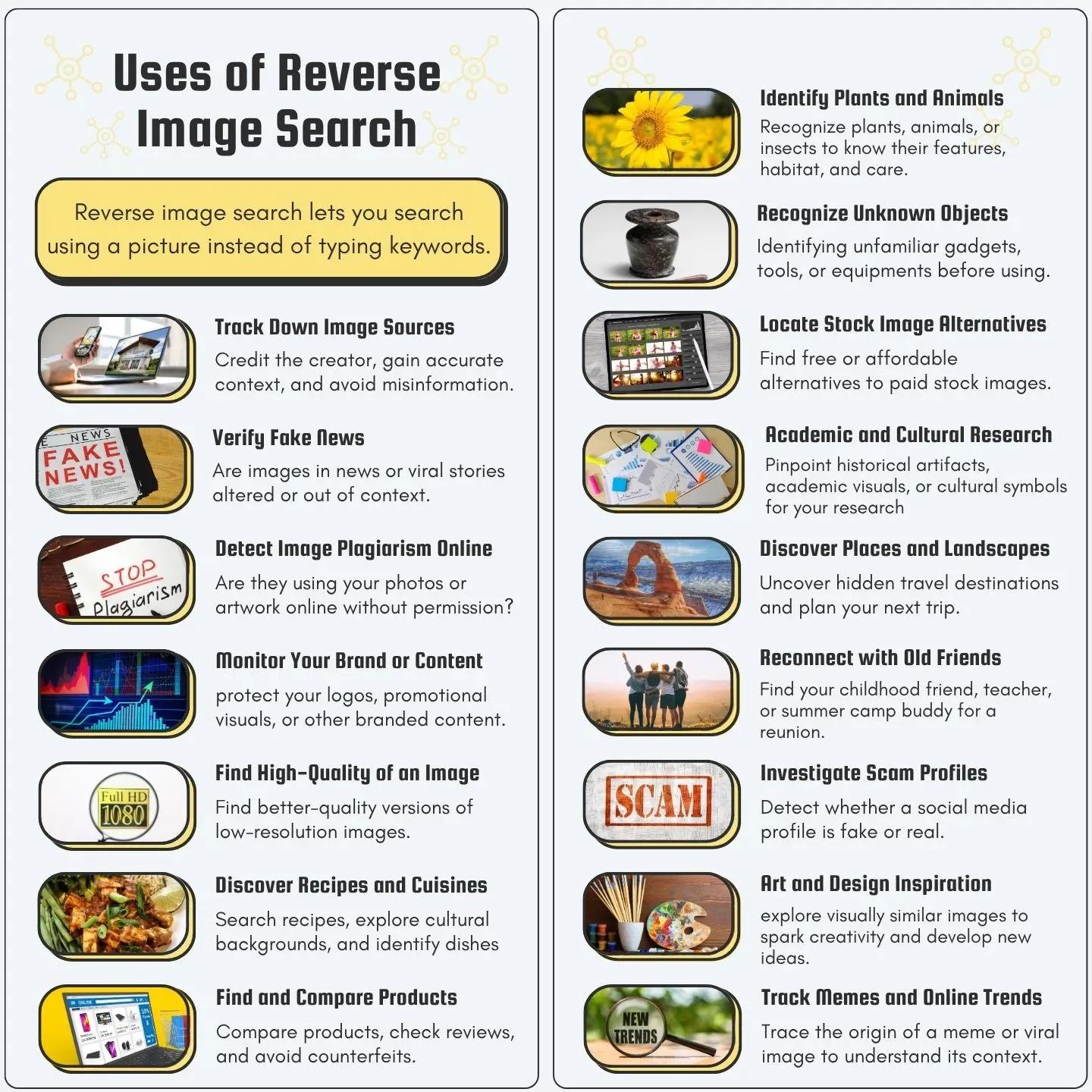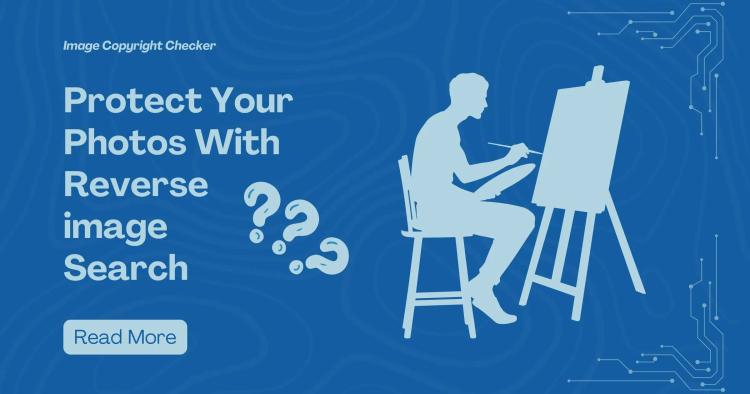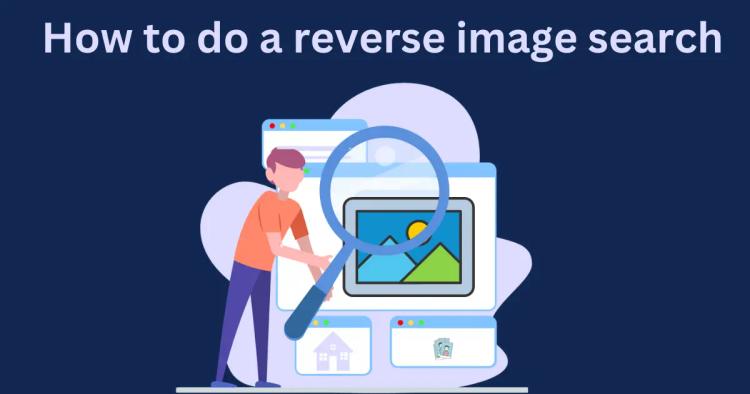Reverse image search is a powerful tool that can solve a variety of real-life problems. It has countless applications for personal as well as professional use.
Reverse image search lets you upload a picture instead of typing keywords to search for similar images, related content, or the original source online.
The steps for performing a reverse image search are very basic. Follow these steps to search the web using an image instead of text.
- Open a reverse image search tool like Google Images, TinEye, or Bing Visual Search.
- Upload the image or paste its URL into the tool.
- Search results will show matches across the web.
- Open multiple matches to explore their context and find what you are looking for.

If you prefer using a smartphone instead of a desktop, read our guide on Google reverse image search from camera roll.
Now that you’ve mastered the basics, let’s explore 16 practical and creative ways to use reverse image search effectively, complete with actionable tips and relatable examples to guide you.
ᴀᴅᴠᴇʀᴛɪsᴇᴍᴇɴᴛ
1. Track Down Image Sources
Tracking down an image’s source ensures you credit the creator, gain accurate context, and avoid misinformation. This task is essential for journalism, social media posts, and research.
- Upload the image or paste its URL into a reverse image search tool and examine the search results to find its original artist.
- Prioritize credible sources such as news sites, professional blogs, or creator portfolios.
- Open multiple results to review captions, timestamps, or metadata that provide details about the image’s origin.
- Use a date filter to identify the earliest instance of the image.
- Remove irrelevant sections (e.g., watermarks) if results are inconclusive.
- Extract keywords from the image or results to perform a complementary text-based search.
I once found a photo of a historic castle for a blog. Most results led to reposts, but further digging revealed the original source: a photographer’s website. It identified the castle as being in Scotland and provided details about visiting it. This ensured I credited the creator properly while enriching my post with accurate context.
2. Verify Fake News
Use reverse image search to confirm whether images tied to news or viral stories have been altered or presented out of context.
- Look for earlier instances of the image online to check its original context.
- Examine visual details and captions for inconsistencies with the claimed event.
- Use tools to check timestamps, location data, or editing history for anomalies.
- Validate findings through reliable fact-checking platforms.
A viral image claimed to show recent wildfire damage, but a reverse image search revealed it was from a fire years ago in a different country. This helped debunk the misinformation and prevent further spread.
AI generated fake images are on the rise. Read our article on how to tell whether an image is AI-generated to stay safe from false information.
3. Detect Image Plagiarism Online
Reverse image search helps protect your creative work by identifying unauthorized use of your visuals, such as artwork or photography.
- Upload your original content to a reverse image search tool to find instances of its use online.
- Prioritize search results from high-traffic websites or commercial platforms where plagiarism may have occurred.
- Look for instances where your image is used without credit or licensing.
- Document unauthorized usage with screenshots and timestamps as evidence for potential legal action.
I once discovered one of my photos on a website without permission. Using a reverse image search, I identified the website and contacted the owner to request proper attribution. They promptly added credit, preserving my rights as the creator.
4. Monitor Your Brand or Content
Businesses can use reverse image search to track their logos, promotional visuals, or other branded content for unauthorized use or misrepresentation.
- Search for your brand's logo or visuals to see where they appear online.
- Check if your assets are being used appropriately or without consent, especially on e-commerce platforms.
- Monitor patterns in unauthorized usage, such as frequent misuse in specific regions or by competitors.
- Use findings to report misuse or negotiate partnerships where relevant.
Searching instances of the business's logo may reveal counterfeit products. Identifying the sellers and ensuring removal of the listings protects the brand's reputation. Reverse image search enables more targeted brand protection strategies.
ᴀᴅᴠᴇʀᴛɪsᴇᴍᴇɴᴛ
5. Find High-Quality Versions of an Image
Reverse image search helps you find better-quality versions of pixelated or low-resolution images.
- Search with the low-resolution image and look for high-quality matches from professional or stock image platforms like Shutterstock or Unsplash.
- TinEye filters images by resolution to find larger, clearer versions.
- Avoid low-authority sites hosting compressed or watermarked images.
- If results are unclear, crop the image and refine the search for better matches.
I once needed a clear version of an old logo for a presentation. Using TinEye, I filtered results by size and found the high-resolution logo on the brand’s official website.
6. Discover Recipes and Cuisines
Use reverse image search to uncover recipes, explore cultural backgrounds, and identify dishes effortlessly.
- Search using a food photo to find recipes for American favorites or international cuisines.
- Prioritize results from trusted platforms like AllRecipes, Food Network, or chef blogs for reliable recipes.
- Review recipe ratings, preparation times, and ingredient availability at local grocery stores.
- Explore cultural origins and regional twists on dishes, such as how Southern BBQ differs from Texas-style BBQ.
- Tools like Google Lens can identify ingredients in dishes like gumbo or a New York-style cheesecake and suggest recipes.
- Refine your search using specific terms like "vegan mac and cheese" or "classic apple pie" for targeted results.
I used reverse image search on a photo of a loaded hot dog. It helped me find a Chicago-style hot dog recipe, complete with tips on recreating the authentic toppings and mustard blend at home.
Pinterest is a great place to find recipes online. Read our article on how to reverse image search on pinterest to find pins faster.
7. Find and Compare Products
Use reverse image search to compare products, check reviews, and detect counterfeits.
- Search using the product image and compare listings online.
- Prioritize results from official brand websites or trusted platforms.
- Review seller ratings, product reviews, and pricing on reputable e-commerce platforms for credibility.
- Compare details like logos, design features, and descriptions to identify counterfeit items.
- Google Lens matches products visually and provides purchasing options.
- If needed, refine the search using the product's serial number or keywords.
I used reverse image search to compare prices for a pair of sneakers. One listing seemed too cheap, and further investigation showed it was a counterfeit based on differences in logo placement.
8. Identify Plants and Animals
Reverse image search is a powerful way to identify unknown plants, animals, or insects, offering valuable insights into their features, habitat, and care.
- Ensure the image highlights the subject clearly, avoiding distractions like shadows or clutter.
- Analyze results from reputable platforms such as botanical databases, wildlife guides, Wikipedia, or expert blogs.
- For plants, focus on soil, leaves, or flowers; for animals or insects, observe their environment, behavior, and unique markings.
- Search using descriptive traits like color, size, leaf shape, wing pattern, or habitat to narrow down matches.
- Compare results with similar species and use critical thinking to ensure an accurate identification.
- If no exact match is found, expand the search to broader categories like "desert plant" or "rainforest insect" for more results.
Our neighbors found an injured bird but didn’t know its species or care needs. Using reverse image search, I identified it as a European Starling and found care tips, helping them nurse it back to health.

Infographic: Top 16 Uses of Reverse Image Search – this diagram outlines sixteen practical applications of reverse image search.
9. Recognize Unknown Objects
Reverse image search is a useful tool for identifying unfamiliar gadgets, tools, or equipment, offering insights into their function, brand, and proper usage.
- Look for descriptive sources such as product manuals, reviews, or technical blogs.
- Identify markings, logos, or unique design elements to narrow down results.
- Add terms like “industrial tool,” “gadget,” or specific functions to refine the search.
- Focus on unique features like shape, material, or attachments to guide the search.
- Explore community forums or e-commerce platforms for expert insights or matching products.
My brother was repairing his car but couldn’t identify a small part he’d removed. Using reverse image search, we discovered it was an oxygen sensor and learned how to replace it safely.
10. Locate Stock Image Alternatives
Reverse image search helps find free or affordable alternatives to paid stock images for personal or professional use.
- Upload the image to find similar results on free platforms like Unsplash or Pixabay.
- Refine your search using size and license filters if supported by the tool.
- Review licensing terms to ensure the image meets your project’s requirements.
Our team was designing a social media post and needed a high-quality stock image without the cost. A quick reverse image search led us to a royalty-free option on Unsplash that fit our theme perfectly, saving both time and budget.
11. Enhance Academic and Cultural Research
Reverse image search is invaluable for identifying historical artifacts, academic visuals, or cultural symbols.
- Look for sources like museums, archives, or scholarly databases.
- Focus on results from credible academic or cultural institutions.
- Cross-reference findings with text-based searches for deeper context.
- Refine searches with descriptive terms derived from the image, such as historical references or artistic styles.
Reverse image search linked a historical painting to an art museum's online archive, uncovering insights about its origin and significance that directly enriched the research exploring its historical and cultural context.
ᴀᴅᴠᴇʀᴛɪsᴇᴍᴇɴᴛ
12. Discover Places and Landscapes
Have you ever seen a stunning photo but didn’t know where it was taken? Reverse image search can help uncover hidden travel destinations and much more.
- Bing Visual Search identifies locations and landscapes with contextual details.
- Look for recognizable landmarks, natural features, or architectural styles to narrow down results.
- Pay attention to signs, languages, or vehicles in the image to pinpoint the location.
- Use Google Maps, Google Earth, or geotagging services to match features with real-world locations.
- Share the photo in travel forums, local guides, or online groups to gain insights from others.
Plan trips by researching attractions and accommodations, uncover cultural or historical significance, track environmental or urban changes, identify filming locations, and reconnect with places tied to cherished memories.
13. Reconnect with Old Friends
Reconnecting with people from your past using reverse image search. Upload old photos from your gallery or albums to locate their current online presence, whether it’s a childhood friend, teacher, or summer camp buddy.
- PimEyes specializes in facial recognition for locating people through old photos.
- Search for profiles on Facebook, LinkedIn, or Instagram using names and mutual connections.
- Use details like names, places, events, or timestamp to refine results.
- Try apps like FaceApp or Oldify to create aged versions of old photos. Use the updated images in reverse image searches to increase the chance of locating profiles.
- Engage with alumni networks, local community pages, or interest-based groups for leads.
I used a childhood class photo, aged it using an app, and found an old friend’s updated profile online. This made a heartwarming reconnection possible after a decade.
14. Investigate Scam Profiles
Reverse image search is a valuable tool for detecting fake social media or professional profiles.
- Search the profile picture to see if it appears on stock photo sites or unrelated contexts.
- Check for inconsistencies between the profile’s claimed identity and the image’s original use.
- Use additional tools like LinkedIn or public directories to verify the person’s authenticity.
A suspicious LinkedIn profile contacted me with a generic-looking picture. A reverse image search showed it was a stock photo, confirming the account was fraudulent.
15. Generate Art and Design Inspiration
Reverse image search can help artists and designers explore visually similar images to spark creativity and develop new ideas.
- Yandex is known for its ability to visually match complex patterns, textures, and objects.
- Search by a reference image related to your project to find similar visuals.
- Look for patterns, colors, or styles that align with your creative goals.
- Save and organize inspiring images into mood boards or project folders.
- Use the hosting pages to explore additional resources, tutorials, or inspiration.
Reverse image search of an abstract painting revealed several similar designs, providing inspiration for our team to refine the project’s mood board and experiment with new color palettes
16. Track Memes and Online Trends
Trace the origins of memes or viral images to understand their evolution and cultural relevance.
- Search with the meme or viral image you found online with a reverse image search tool.
- Look for the earliest sources or platforms where the image appeared, such as Reddit or Twitter.
- Analyze how the image evolved with captions, edits, or new contexts.
- Validate findings with timestamps or user profiles to confirm authenticity.
A reverse image search traced a popular meme, initially claimed as original, back to a Reddit post from years ago. Once the discovery was shared, people began commenting on the post, discussing the meme's real origin and evolution.
ᴀᴅᴠᴇʀᴛɪsᴇᴍᴇɴᴛ
Conclusion
Mastering reverse image search can transform how you interact with online visuals, uncovering sources, verifying authenticity, and sparking creativity. By applying the tips and strategies in this guide, you can confidently explore its many possibilities, solving problems in everyday life. Start experimenting today!







